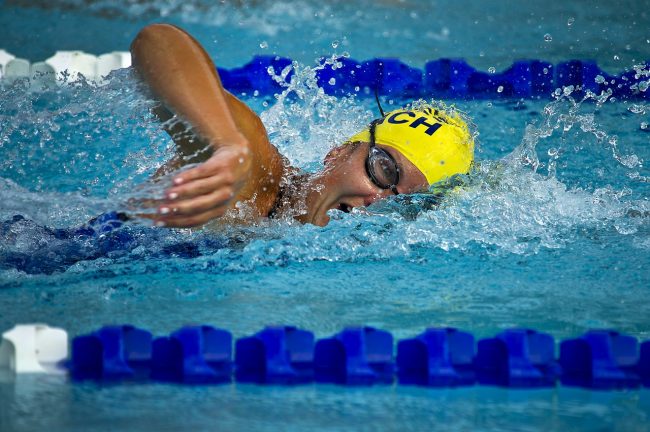Aussie Swimmers Make A Splash At 2015 World Championships
Published on
24 Aug 2015

Call us on: (03) 9975 4133
Ever noticed the elite swimmer’s physique with massively wide, powerful shoulders and relatively small, thin legs – not to mention a six pack to be proud of? Many competitive swimmers will perform 6,000 strokes in the pool on a daily basis. This adds up to over 2 million strokes a year.
The 16th FINA Swimming World Championships finished just over a month ago. Hosted in the Russian city of Kazan, the championships featured the world’s cream of talent in and around the pool. Everyone knows about the headline events such as the swimming and diving, but many would be surprised to hear that six different water-based sports were featured. These included Open Water Swimming, High Diving, Water Polo, and Synchronised Swimming. It was considered a successful outing in the pool for several of the elite Australian swimmers building momentum ahead of the Olympic games in less than 12 months time. So how did Australia measure up on the international stage – and which individuals should we be looking out for over the next year ahead of Rio 2016?
Gold Medals & New World Champions
Australia finished second on the swimming medal tally after the eight-day meet with seven gold. On an adjusted medal tally with just Olympic events, the Australians would have finished ahead of the US with seven gold to the Americans’ six. Australia also picked up three silvers and nine bronze medals in all events, placing fourth overall behind China, the US and Russia.
This is all the more impressive considering Australia more than doubled their 2013 world titles haul of three gold. This was on the background of a very disappointing medals haul in the London 2012 Olympics, which led many to question whether they could continue their strong past showing in swimming.
Head coach Jacco Verhaeren commented, “there were great performances but we still have a lot to do to make it happen on an Olympic stage. We are progressing. Next year the clock is going to start at zero again.”
Bronte Campbell was the stand out darling of Australian swimming with some impressive performances. She finished with three gold (including the marquee 50 and 100m freestyle events) and a bronze for the meet ensuring she out shone her very talented older sister Cate for the first time. She was one of the top performers along with backstroke champions Emily Seebohm and Mitch Larkin. Seebohm won three gold medals and was the fifth woman since 1973 to complete the 100m-200m world titles doubles. Larkin finished with two gold after being the first man in 10 years to collect both 100m and 200m gold. So backstroke events are in rude health and it bodes really well for the coaching and background staff and performance team.
Non – Swimming Events
The Australian female water polo team reached the semi-finals only to be beaten by the USA (eventual winners). Having played water polo myself at University and Division 1 National Level back home in Ireland, I would not be in a hurry to compete and wrestle some of the Aussie female players. To say that they are physically strong is an understatement, and many have a pair of guns that I would be proud of! They showed a great balance of power and endurance treading water and getting up and down the pool. Australia also won two bronze medals in the diving events.
Swimming Shoulder Injuries
Ever noticed the elite swimmer’s physique with massively wide, powerful shoulders and relatively small, thin legs – not to mention a six pack to be proud of? Many competitive swimmers will perform 6,000 strokes in the pool on a daily basis. This adds up to over 2 million strokes a year. Up to 50% of swimmers end up with “swimmers shoulder”. This is due to the incredible forces through the joint in the catch phase as the body propels forward from the shoulders. The kick is used as the rear engine (especially underwater) and to stabilise the torso for efficiency.
Swimmer’s shoulder is the most common injury seen and is essentially an inflammation of the shoulder tendons within the joint space.Training errors such as overuse, misuse, or poor technique may contribute to this condition. Many swimmers have inherent ligamentous laxity and often will have multidirectional shoulder instability – essentially, more movement in the joint.
Swimmers develop muscle imbalances where the adductors and internal rotators of the arm overdevelop (due to the nature of swimming). Unfortunately, this leaves a relative weakness of the external rotators and scapular stabilisers – simply because they don’t get used as much. Consequently, this muscle imbalance overuse and/or poor technique results in an anterior capsule laxity. These all culminate and allow the humeral head to move forward and up thereby, compromising the subacromial space (where the supraspinatus and biceps tendons run through) causing an irritation/impingement. Physiotherapy and especially a specific strengthening rehab program can really help this condition. If you feel you are experiencing any of this, or are yourself an avid swimmer wanting a check up, give us a call or book an appointment and we can have you making a splash in no time! Early diagnosis and treatment are both key to avoid missing time out from the pool and competition.


